Echeveria Shaviana is a award winning succulent species. It is the recipient of a prestigious merit award awarded by the royal horticultural society.
Most of the Echeveria plants are native to Northern Mexico and Echeveria Shaviana are no different. They make the mountain areas their natural habitat in those areas. They belong to the family Crassulaceae.
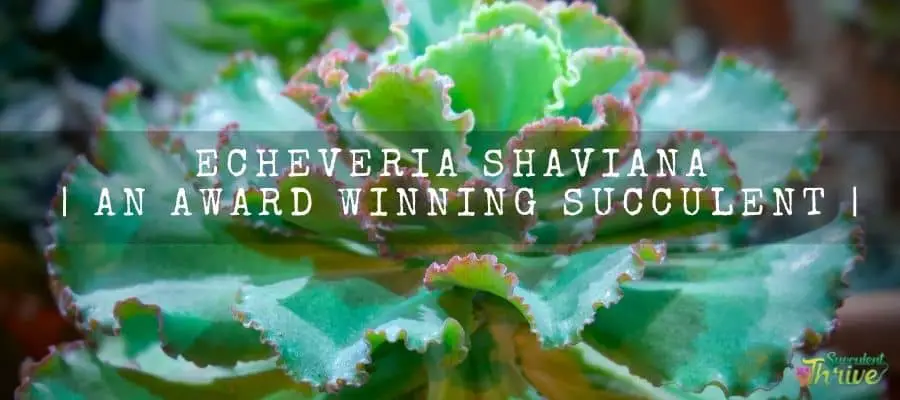
These award-winning plants require low maintenance just like other succulents. Mexican Hens and chiks are their common name.
Since these are low maintenance plants, even inexperienced succulent gardeners can cultivate them. They are so adorable and unique in their outlook.
Hence, they would add a sense of freshness and a uniqueness to your garden. So, if you are a curious succulent enthusiast who wishes to learn about these plants , it would be worthwhile going through this article.
We have covered here on the right care tips you need to practice , the modes of propagating them etc. Furthermore, I have explained the bugs’ attacks and the diseases they may have to come across also.
How do I identify Echeveria Shaviana?
Echeveria Shaviana would usually come up as a tender soft succulent. They are an evergreen set of plants. Echeveria Shaviana usually develops stems which are short.
Further the stems would be covered with the rosettes. The rosettes would be made of blue gray leaves which would radiate from the stem. The leaves edges would be ruffled and crinkled.
Further you may also spot the leaved edges as frilly and wavy too. In addition to that you can also spot some tinges in pink along the edges of the leaves.
Echeveria Shaviana stems would get as tall as 6 inches (15cm) at maturity. In addition to these features, they may blossom with flowers in pink and in yellow.
Those blooms would tend to take a look at a bell. They would be 0.5 inches ( 1.3cm) in length. Diameter wise they would be about 0.3 inches (0.7cm). These flowers may carry branches which would grow up to 1 foot in height.
Size of the plant
Echeveria Shaviana would grow up to a maximum height of 6 inches ( 15cm). Moreover, they would be about 8 inches broad at maturity.
Growth rate
Echeveria Shaviana is growing at a slow speed.
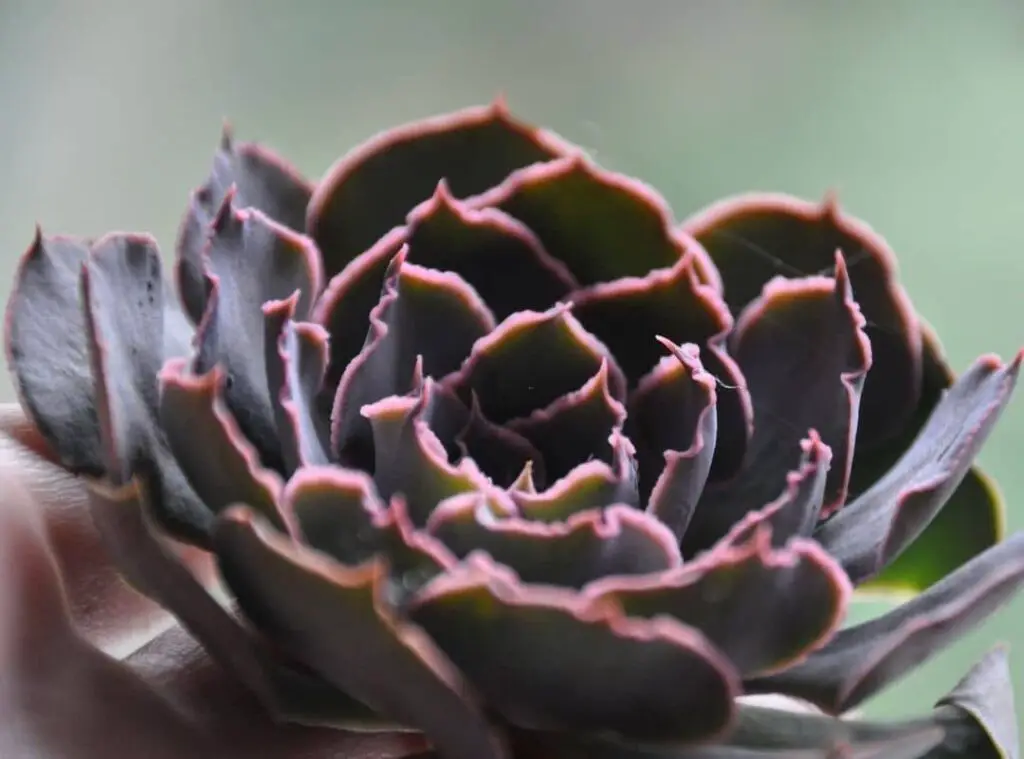
One look care guide
| Botanical Name | Echeveria Shaviana |
| Common Name | Mexican hens |
| Plant Type | Succulent |
| Mature Size | 6 inches ( 15cm) / 8 inches in width |
| Sun Exposure | Full Sunlight / partial shade |
| Soil Type | Well draining |
| Soil pH | Acid, Alkaline, Neutral |
| Bloom Time | Summer |
| Flower Color | Pink/ Yellow |
| Hardiness Zones | USDA zones 9-11 |
| Native Area | Mexico |
| Toxicity | Non toxic |
| Average price | 13 USD |
How do you take care of Echeveria shaviana?
Caring for the eye-catching Echeveria Shaviana is pretty simple and you will feel accomplished when you see them flourish too.
Light Requirement
In terms of sunlight, Echeveria Shaviana have similar requirements just like the other fellow succulents To further elaborate on this, they would enjoy having full sunlight during the morning hours and partial shade during the hottest hours of the day.
Do not ever expose them for direct sunlight as it would bring so many adverse repercussions on the plants. For example, if you keep the plants uncovered for direct sunlight as it would result in discoloration of the plants.
When you cultivate them indoors I suggest you place them closer to a bright sunny windowsill as it could possibly be the brightest sunny spot at your home.
Still, if you think the plants are lacking ample sunlight, you can consider placing grow lights closer to the plants. if your plants are starving for adequate sunlight, their stems would tend to grow taller and become misshapen.
Outdoors grown Echeveria Shaviana plants would prefer to stay in a spot where they will be secured from the scorching sunlight also. Unless it would burn the plants.
What is more alarming about the sunburns is that those burnt spots would remain the foliage forever. Consequently, it would make the plants less appealing too.
They need to ideally have six hours of sunlight to grow firmly. Having said that they can also tolerate low lighting levels also.
Temperature and humidity
Temperature wise, Echeveria Shaviana would opt to grow in a temperature range between 68 degrees – 80 degrees Fahrenheit ( 20-27 degrees Celsius) during the daytime.
On the other hand, a temperature range around 60 degrees Fahrenheit ( 16 degrees Celsius ) would work well with these plants during the night.
Do not expose the plants for drastic changes in the temperature. Ideally, they need to have only one or two degrees difference in the temperature and not more than that.
When it comes to humidity, they thrive in dry places all the time. So when you cultivate them you need to ideally provide a humidity level around 40 %.
Having said that, Echeveria Shaviana is tolerant of humidity levels which are less than 40 % too, but not for too long. Low humidity levels could make their leaves curl.
If the humidity levels are too high, the accumulation of the moisture in the central part of the rosette would be somewhat high.
You need to avoid this happening unless it leads to rot. Further do not spray water on the plants leaves to increase the humidity levels as it would also lead to rot.
Is it cold hardy?
Echeveria Shaviana are not frost tolerant plants.
Growth Zone
Echeveria Shaviana would opt to grow in USDA zones 9-11. You can plant these decorative species outdoors if you grow them in these zones.
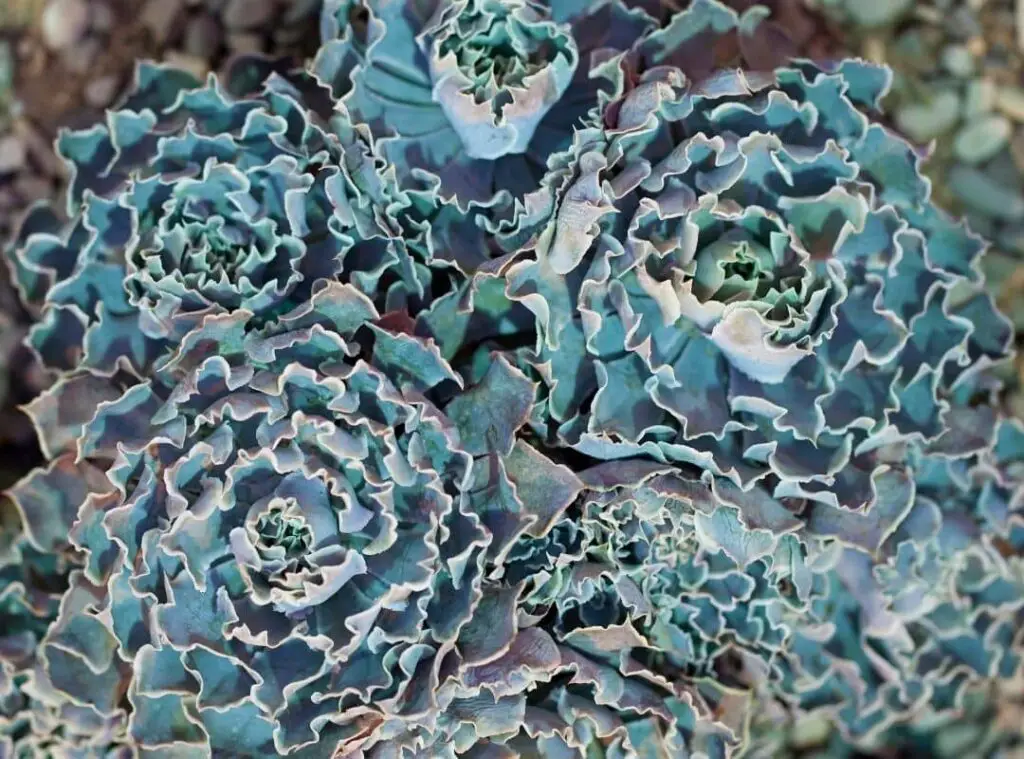
Watering Requirement
Watering the Echeveria Shaviana plants is a delicate matter. It is vital that you allow their soil to wither between two watering sessions.
Only then you need to soak the plants with water and allow the excess water to move out from the pots. Refrain from exposing the plants for siggy and damp conditions as it would bring so many adverse effects on the plants.
You need to change the watering frequency depending on the humidity levels, temperature, types of light used and lastly on the size of the pots as well.
However generally speaking you need to water them once every fortnight. Many gardeners tend to check the soil condition by simply touching it and feeling it by using the fingertips.
You need to simply use your fingertips and check whether the top layer of the soil is moist or dry. If your fingertips feel any moisture you need to hold onto watering them for another one or two days.
Soil Requirement Type / pH
The right soil mix which would suit these plants the best would be a soil mix which is well draining.
To elaborate further on this, the excess water should ideally evaporate rapidly without retaining in the potting medium.
If the excess moisture is retained in the potting medium, it literally means , it is a poor draining soil mix which would not suit these plants.
Many people opt to go ahead with a commercially made succulent soil mix or a cactus soil mix as they are fast draining.
Besides, you may also use a regular soil mix and then add some coarse sand or perlite to make it gritty.
That would enhance the draining of the soil mix. Echeveria Shaviana plants are epiphyte plants which literally means they need to have a good aeration also around the roots of the plants. So, when you pot them, do not bury the plants. Further refrain from using a heavy soil mix too.
Pot size Potting and Repotting
I encourage you to use a pot which consists of one or two draining holes to grow the Echeveria Shaviana plants.
In addition to that you should select a pot which is high in porosity so that the remaining water would evaporate from the pots much faster.
Considering that you need to avoid using plastic pots and try to use clay pots or terracotta pots instead.
Echeveria Shaviana are slow growers. Therefore, you need to transplant them only once every other year. When transplanting them, you need to go for a slightly larger pot. First, you should ideally wait until spring comes as only then will they be actively growing.
When repotting you need to first take the plants out from the pots gently. Next clean the older soil around the plants properly.
Once you complete this step, you may come across dead decaying blackened plant parts. So if you find any, you should snip them off and scrape the older flat leaves too.
After that you could treat the cutting with fungicides and then move them to new pots. Ensure that you have filled the pots with a well-draining soil mix as explained in the above.
Skip watering them for one week’s time so that it would allow the plants to grow in new conditions.
Where to Plant
You need to plant them in a location where they can fulfill their light requirement. In addition to that , you need to always plant them in a soil medium which has excellent drainage.
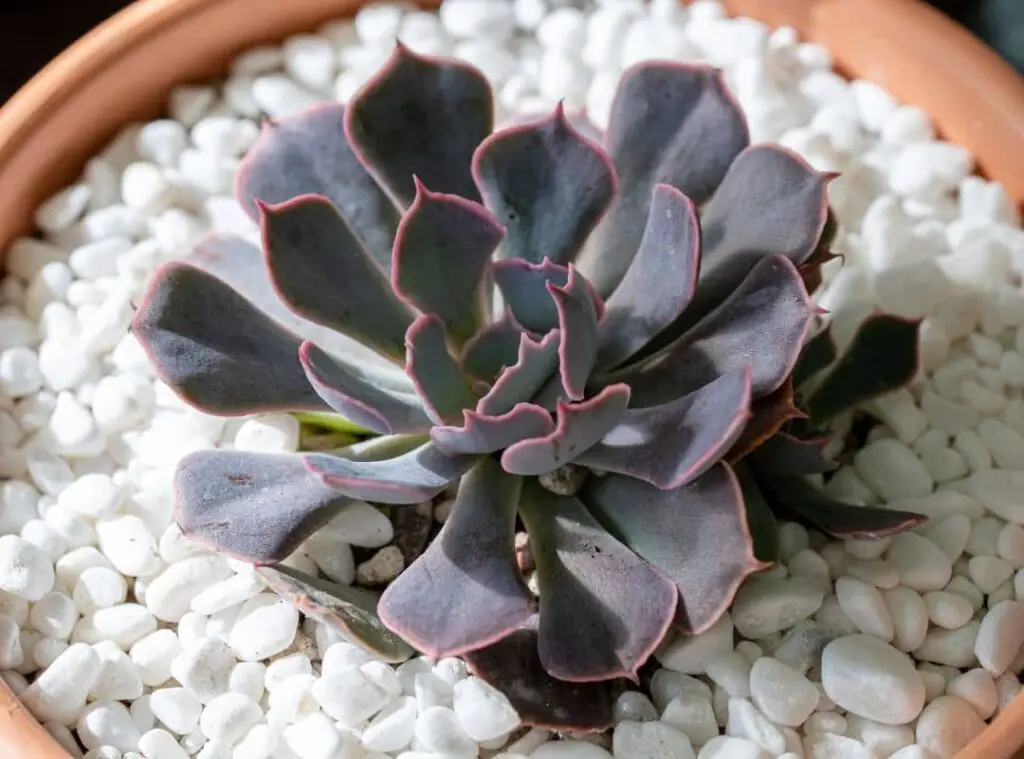
Fertilizer and time of year
Echeveria Shaviana are succulents which literally means they would not want regular fertilizers. They would grow vigorously irrespective of whether you feed them or not.
That said, you can apply some fertilizers when they are actively growing in summer so that it would boost the healthy growth of the plants.
However you need to dilute the fertilizer to half strength and then apply them. Frequency wise, you need to apply them once every fortnight.
Besides when you feed them, you need to ensure that you don’t supply them too much fertilizer. If you end up feeding them in excess, chances are that it may burn the plants and cause the health to deteriorate.
Further it is noteworthy that you need to feed the plants only if the new growths of the plants are pale or yellow only. It literally means the plants are lacking sufficient nutrients and they cannot conduct the photosynthesis process.
Flower
Echeveria Shaviana may emerge with blooms during summer. Those flowers would tend to take pink and yellow color. The flowers would form on one side of the flower stalk.
Dormancy
Echeveria Shaviana are winter dormant plants. During their dormancy, you need to avoid feeding them and watering too.
Toxicity
Echeveria Shaviana are non toxic plants
Common bugs and illnesses
Echeveria Shaviana can combat pests’ attacks, diseases successfully. Having said that, occasionally they may come across these conditions especially when there are favorable conditions for them.
If I briefly explain on them, mealybugs could be a real menace for Echeveria Shaviana. You could easily identify the mealybugs as they would tend to look like white cottony appearances on the plants.
If you could spot one or two mealybugs you can treat them with a little soap and water. Having said that if they have spread on a massive level, you can remedy them using a cotton swab dipped in rubbing alcohol.
Aphids would also be troublesome for them. Aphids would be more like small bugs which would tend to take a pear-shaped body.
Further, scales would usually occupy the leaves and the stems of the plants. You could spot the scales as tiny shells which are stuck to the stem.
Lastly fungus gnats may also cause trouble for these plants. However fungus gnats won’t create much harm for the Echeveria Shaviana.
That said, dealing with them would be so irradiating. You may apply to treat these with cotton swabs dipped in alcohol just like you deal with the mealybugs.
Finally root rot could be another issue which would occur mainly due to over watering. In addition to over watering, poor aeration and a poor draining may also contribute to this condition.
To remedy them, you need to first cut back on watering and consider repotting them if necessary. However when you repot them, make sure that you are using a sterilized soil mix so that you will not have to deal with these situations once again.
Special Care tips
Echeveria Shaviana requires a low maintenance from you. Hence you do not need to prune the plants regularly.
That said if you could spot any unhealthy plant parts you need to prune them and make the plants look pleasant. Furthermore, bear in mind that Echeveria Shaviana may tend to lose some flowers as they mature and that is how they have constricted naturally.
Echeveria shaviana benefits
Echeveria Shaviana are renowned for their decorative value. So, they would be excellent choices for container gardening.
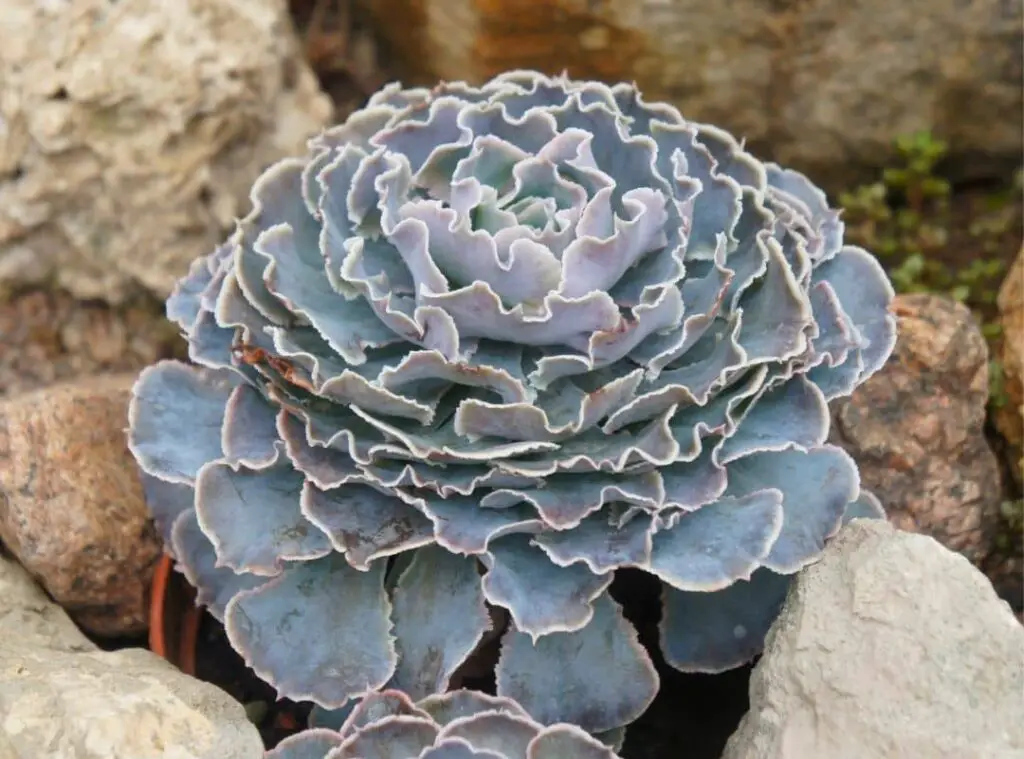
How to propagate Echeveria shaviana
How to propagate the Echeveria Shaviana by using leaf cuttings
First and foremost, you need to obtain multiple leaves from the plants. You should ideally snip off the leaves slightly below their adjoining point to the branch.
Do not remove any part of the stem and instead try to remove a lead section only.Next leave them in a hot dry place so that they can develop callous.
Next you can plant them in a soil mix which is fast draining. When you plant them, ensure that you place them about half an inch deep into the soil. After that water them lightly,
Once you complete all these tips, you should place them in a location where they can gain indirect sunlight for several weeks. After several weeks’ time you could spot them developing roots. Now you may pot them in new pots.
How to propagate the Echeveria Shaviana by using offsets?
You could spot Echeveria Shaviana producing small plants around the base of the plants. So to propagate them, you need to first separate the offsets from the parent plants.
You should use a sharp, sterilized blade or a scissor to do this task. Do not accidently damage the roots of the plants when you do this.
Next place the offsets in the potting soil and water them thoroughly . You could witness them developing roots within a few weeks or a couple of months. When you spot them producing new growths you can transplant them in permanent planters as you wish.
Conclusion
It would be so much fun to grow the Echeveria Shaviana plants and it would be aesthetically pleasing too. Further they are easy to grow as well.
They would flourish and grow to their best with minimum care. They can thrive well for so many years as well. Caring the Echeveria Shaviana is not time consuming yet you will feel accomplished when you spot them flourishing.
Read Next : Echeveria Nodulosa Maruba | Stunning Succulent |
